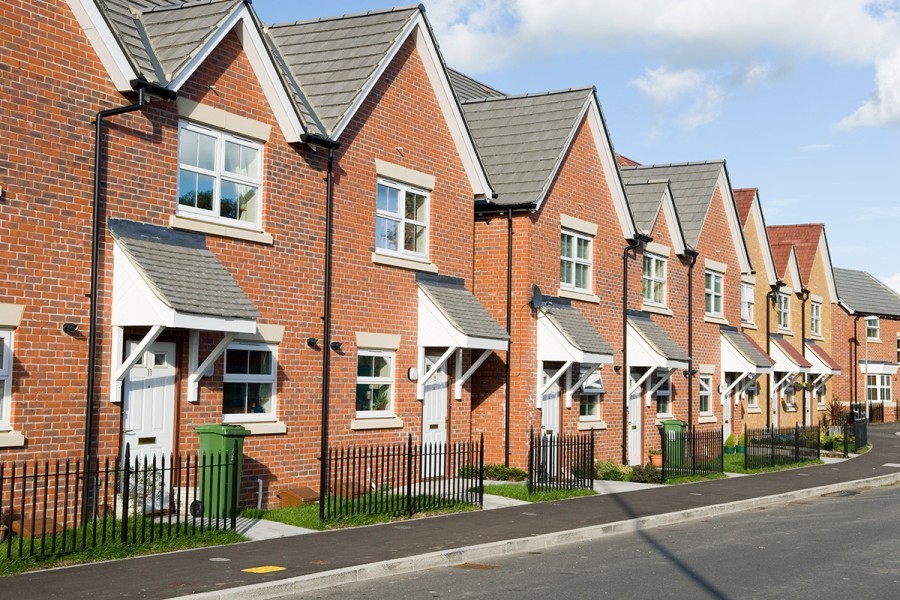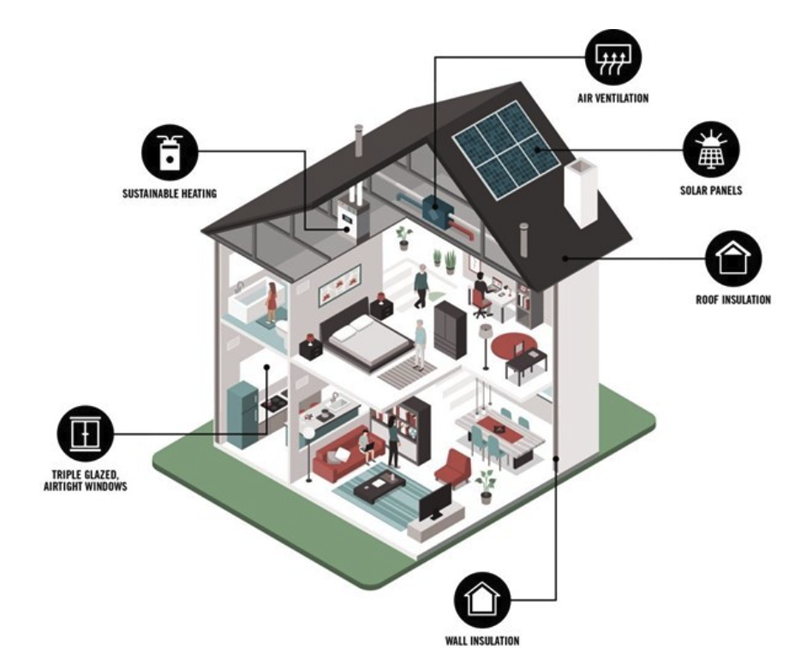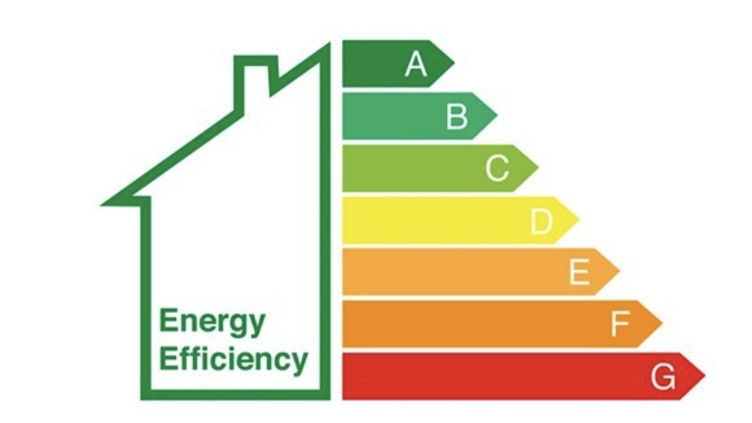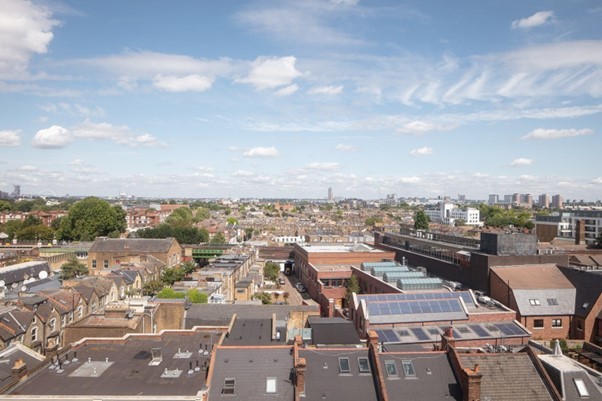
Residential properties in the UK are responsible for almost 40% of the country’s energy related carbon emissions. In London, homes contribute to around one third of the city’s greenhouse gas emissions.
Heating, lighting and household appliances all require energy to run. When this energy is generated from burning fossil fuels, harmful emissions are released into the atmosphere. The majority of UK homes are also incredibly energy-inefficient, meaning excess energy is wasted through poor insulation, air leaks, outdated appliances and many other ways.
In order to reach the government’s goal of net zero by 2050, it’s clear that there needs to be a real focus on improving the energy-efficiency of our homes. This will be achieved through reducing overall energy-demands, introducing smart technologies and moving towards low-carbon heating.

Heating, lighting and household appliances all require energy to run. When this energy is generated from burning fossil fuels, harmful emissions are released into the atmosphere. The majority of UK homes are also incredibly energy-inefficient, meaning excess energy is wasted through poor insulation, air leaks, outdated appliances and many other ways.
In order to reach the government’s goal of net zero by 2050, it’s clear that there needs to be a real focus on improving the energy-efficiency of our homes. This will be achieved through reducing overall energy-demands, introducing smart technologies and moving towards low-carbon heating.

Improving the energy-efficiency of UK homes through retrofitting
There are 27.8 million homes in the UK, with an average Energy Performance Certificate rating of D. To make a real impact on overall residential emissions, upgrades will need to be rolled out across the majority of these homes.
Retrofitting is the refurbishment of existing homes and is the most effective way to make them more efficient, sustainable and better for the environment.
In Ireland, the government implemented a National Retrofitting Scheme which pledges to upgrade the energy-efficiency of 500,000 homes by 2030. It’s part of the Irish government’s Climate Action Plan, which aims for an overall reduction in greenhouse gas emissions of 51% by 2030, and to achieve net zero by 2050.
The scheme will deliver cost-effective carbon savings while ensuring homes are comfortable to live in and support clean growth. It will also help tackle fuel poverty by reducing bills and support green jobs.
It’s clear to see the benefits of large-scale retrofits. However, with almost 13 times more homes in the UK, would rollouts like the National Retrofitting Scheme be achievable here?
“The scale of the task in the UK is considerably bigger, but no less important,” says Paul Testa, founder of Paul Testa Architecture and contributor to Homebuilding & Renovating. “There’s no denying the scheme would clearly need more funding and the logistical challenge would be much greater if it was going to have proportionally the same effect.”
Housing associations and council collaboration
Housing associations and councils are in a great position to combine skills and funding to push retrofitting forward in the UK.
In London, the Mayor’s Innovation Partnership and the ‘Retrofit Accelerator – Homes’ Scheme aims to drive innovation throughout the nationwide supply chain and reduce costs through a pilot scheme.
Seven London-based social housing providers and four UK building firms have invested in the partnership, which plans to complete 1,600 whole-house retrofits in London by 2024.
After the three-year partnership, a framework for delivering retrofit projects will be launched. This framework will be applied to bigger projects with a potential value of £10 billion, equivalent to up to 190,000 retrofitted homes.

Partnerships like these are a fantastic way to increase the number of retrofits projects across the country. By working together, housing associations and councils can create pilot schemes that showcase the benefits of retrofitting, establish what works and what doesn’t, and indicate which measures will be most cost effective.
Upgrading 27.8 million homes is a huge task, but collaborative projects like these are certainly a step in the right direction.
How Nilan UK can help
We’ve recently worked with housing associations and councils on their retrofit projects.
The first step is to upgrade the buildings to make them air-tight. This helps to lower the overall energy-demands of the homes.
Once this is done, they can then be fitted with cutting-edge Nilan Compact units. The units work by exploiting the energy in air extracted from the building to provide hot water, ventilation, heating and cooling.
This approach leads to significant reduction in domestic energy costs and carbon emissions, and therefore has a lower impact on the environment.
For more information on how Nilan products can be used in your retrofit projects, contact: sales@nilan.uk.com